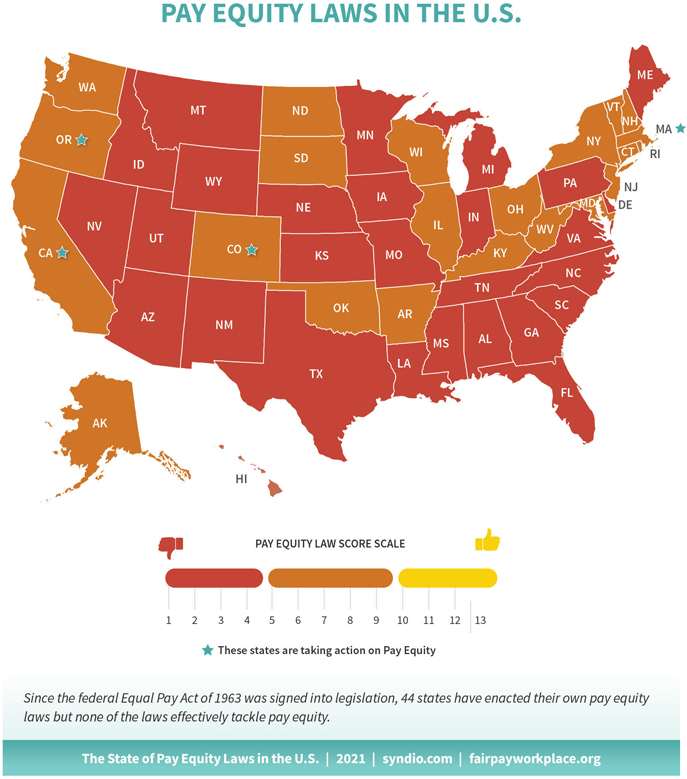America’s laws are ‘stifling’ employers’ ability to make progress on pay equity and close pay gaps, according to a new report.
Federal and state pay equity laws all lack at least some of the key components to make the laws effective for employees and feasible for companies to comply, reveals the study carried out by equity tech analytics platform Syndio and non-profit Fair Pay Workplace; which provides a transparent and trusted certification standard for employers dedicated to true pay equity.
Around 44 states have enacted pay equity laws since the federal Equal Pay Act of 1963 was signed into legislation. But none of these well-intentioned laws effectively tackle pay equity. Instead progress on closing the gender pay gap in the US has actually stalled, noted report; The State of Pay Equity Laws in the US – 2021.
The report found that even the most well-intended laws have put undue burdens on employers, stifling their ability to make progress on pay equity. Some still have flaws that keep the laws from fully protecting the people who are not being paid fairly. “And we’re not going to see real change until legislation also supports and motivates employers to take action on those pay equity analysis findings,” the study points out.
MOVING THE NEEDLE ON PAY EQUITY
“Despite a growing number of state and federal rules encouraging pay equity, the US is persistently behind in closing the pay gap,” said Maria Colacurcio, CEO of Syndio. “Many laws stifle employers’ ability to make progress on pay equity; while others have flaws that don’t fully protect the people who are not being paid fairly. To move the needle on pay equity, it’s important to ensure any new laws protect the rights of individuals and are feasible for companies.”
Countries that are successfully closing gender pay gap, like Australia, focus legislation on the pay gap; the average pay between two groups, such as all working men and all working women. This is in contrast to US laws, which are focused on pay equity; fair compensation for employees doing substantially similar work.

GENDER PAY GAP REPORTING
When Australia passed the Fair Work Act back in 2009, for example, requiring equal pay for men and women much like the US, the pay gap didn’t improve. In fact, it grew, fluctuating from 17.0% to 18.5% (in 2014). But when Australia passed the Workplace Gender Equality Act of 2012, which required employers to publicly report gender pay gap data starting in 2014, the gender pay gap started to decrease every year; down to 13.9% in 2019.
The UK also introduced gender pay gap reporting requirements since 2017 for employees with 250+ employees, but only on pay gap data (not pay equity). Although it started to show signs of decreasing the gender pay gap, progress has stalled. In fact, as gender pay gap reporting was suspended last year because of Covid-19, there are fears that the UK’s gender pay gap could have worsened. Gender pay gap reporting has recently been re-instated in the UK this year after much campaigning to ensure the pay gap doesn’t widen any further, as reported.
There are some signs that the US laws will follow the UK and Australia and introduce gender pay gap reporting requirements, which has been proven successful in Australia. Last September, California became the first state to mandate reporting. Employers with at least 100 employees in California must report compensation data for certain job categories by gender, race and ethnicity relevant government departments.
As well as analysing pay equity legislation from all 50 US states and other countries, the report also outlines 10 components that any law should include to ensure fair pay; and make it possible for companies to comply. Click here for more information.







































